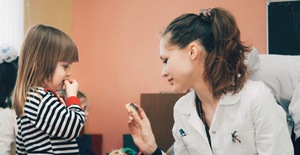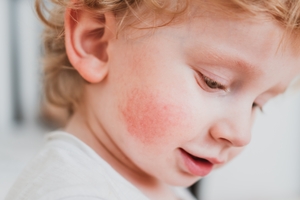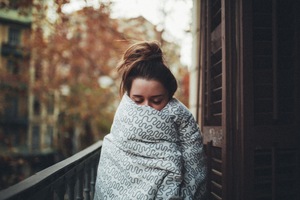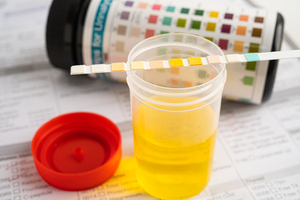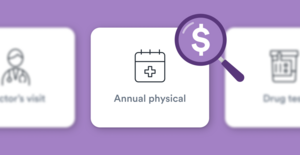Key points
- Parents should know basic first aid skills including treating open wounds, nosebleeds, burns, stings and bites, and managing fevers.
- In case of suspected broken bones, parents should immobilize the affected limb before seeking urgent care.
- Parents should be trained in CPR and the Heimlich Maneuver to handle life-threatening situations.
- Telemed services and urgent care centers are available for immediate assistance in case of doubt or emergencies.
- Lastly, the article encourages parents to take CPR and first aid courses, particularly those designed for children and babies, to be better prepared for emergencies.
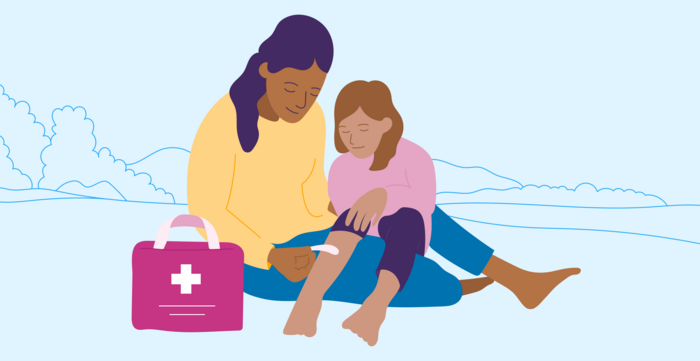
We wish we could protect our kids from everything. But unfortunately, injuries are part of life, especially for high-energy little ones. As parents, we’re often the first on the scene for those scrapes, stings, fevers, and sometimes, emergencies. And while we can’t always prevent them, we can be prepared.
Below, we’ll outline the basic first aid skills every parent should have in their back pocket. And if you’re ever in doubt, Solv’s got your back. We offer telemed services and have urgent care centers around the country.
Here are the 8 basic first aid skills every parent should know:
1. How to treat open wounds
Minor cuts and scrapes usually don’t require a trip to the ER. Aside from a hug, your little one likely just needs some basic first aid. The first step is to wash your hands and then rinse away any debris from the wound. Then clean the wound (with antiseptic solution or soap and water) and apply an antibiotic ointment. If there’s bleeding, elevate the wound and apply gentle pressure for 15 minutes with sterile gauze or a clean cloth. Then apply an adhesive bandage to keep out bacteria and change it at least once a day until the wound has healed.
Deep wounds may require stitches or debridement. Here are some telltale signs your child needs to be evaluated for stitches:
- The wound looks deep
- The cut is more than a half inch long
- The edges of the wound would need to be pulled together to cover the exposed tissue
- The cut has ragged edges
- It’s bleeding enough to soak through a bandage
- It keeps bleeding after you apply direct pressure for 15 minutes
Other things to know about wounds:
- Don’t try to extract objects from wounds. If there’s something inside the wound, have an urgent care provider take a look.
- Be seen by a doctor if you suspect it’s infected (some signs: chills or fever, red streaks around wound, sore is swollen or oozing puss).
- If the wound is a result of an animal or human bite, or a rusty object, it is at high risk to become infected. See a healthcare provider immediately..
If you’re ever in doubt, reach out. Solv’s network of medical professionals can take a look via telemed or in person at one of our urgent care facilities.
2. How to care for a bloody nose
Nosebleeds are usually the result of nose picking or dry air. They’re super common in kids 3 to 10 years old and while dramatic, aren’t typically serious. Most will stop on their own and can be cared for at home.
If your child has a nosebleed, don't tilt her head back. The blood could go down her throat and make her throw up. Instead, have her sit up straight, learn forward, and tilt her head forward slightly. Then use tissue or a washcloth to pinch her nose tightly just below the nasal bone, but above the soft cartilaginous tip of the nose. Keep pressure there for about 10 minutes by the clock Tempting as it may be, discourage her from blowing her nose for a while—even a gentle blow can trigger the bleeding again. An hour or so after the bleeding stops, dab some Vaseline on the inside of the nostril to keep it moist. If several attempts at stopping the bleeding in this manner are not successful, you or your child might need to be seen at an urgent care center.
3. How to treat burns
For a minor burn, the best course of action is just cool water. Run the burned area under the tap for 15 minutes to cool the skin, ease the pain, and stop the inflammation. Next, apply an antibiotic ointment to help soothe the burn and aid healing. If your child still seems to be in pain, Tylenol or ibuprofen can help. Leave any blisters alone—they’re barriers that help prevent infection. Once the blister pops on its own, you can apply an antibiotic ointment and a clean band aid or bandage. For burns on the hand and feet (other than very small burns) or larger burns, especially ones that cross joints, you should be seen in an emergency room.
4. How to treat stings and bites
Bees, Wasps, and Hornets
Don’t try to pull the stinger out. Instead, remove it by scraping the skin with a firm item like the edge of a credit card or a dull knife. Then put a cold compress on the sting to help relieve the pain. You can also put a wet tea bag on the area for 15 to 20 minutes. And perhaps bring your kid a popsicle. Watch out for any signs or symptoms of severe allergic reactions like dizziness, numbness in the mouth or throat, trouble breathing, or a large patch of hives. Call 911 if you are experiencing any of these.
Ticks
Performing tick checks on your child is important, especially if they’ve been playing in a grassy or woody area. If you find a nasty bugger, use tweezers or your fingers to grasp as close as possible to its head. Then pull it away from where it’s attached. Clean the area with soap and water. If your child develops a fever or a rash, call your pediatrician.
Spiders
Spider bites are unsettling, but most only cause mild reactions. Just wash the area, apply cool compresses, and if needed, give your child acetaminophen or ibuprofen. If your kid’s been scratching the bite, apply an antibiotic ointment and encourage hand-washing to protect against infection. Black widow and brown recluse spider bites, however, can be fatal in children. If you suspect your child’s been bitten by one, call your local poison control hotline or call 911. Treatment will depend on your child’s symptoms, age, and general health. It will also depend on how severe the condition is.
5. How to Bring Down a Fever
Your child’s forehead may feel hot, but the only way to really know if they have a fever that requires intervention is to take their temperature. Temperatures above 100.5 can be associated with an infection. Given the current resurgence of COVID, fever or cold symptoms should be evaluated for a possible COVID test. You should also be tested if you have been exposed to someone with COVID. For high fevers, call your pediatrician or have your child seen at an urgent care center for evaluation.
If your child does have a fever, dress him in light clothing, make sure he’s getting enough liquids, and even give him a cool bath. Your doctor may also suggest fever-reducing medicines like Children’s Tylenol.
6. How to splint a broken bone
Anything broken is definitely going to mean a trip to urgent care. But to get them there safely, you’ll need to stabilize the broken bone. Try and immobilize the affected limb. Rolled up magazines and a cloth wrap to hold it in place is often enough. Go to the closest urgent care center. For suspected long-bone fractures, especially if there is any numbness or bleeding, a 911 call and trip to the ER may be warranted.
7. CPR
If you are not CPR certified, it’s easy to find a class. You can search for in-person classes by your location on the Red Cross’ website, or even take an online course in child and baby CPR and first aid.
8. The Heimlich Maneuver and How to Handle a Choking Baby
Here’s a fact that’ll make you rush to child-proof everything in sight: Babies can choke on anything small enough to fit through a toilet paper roll. If you have young children, it’s extremely important to know how to handle choking situations. To learn how to react when you think your child may be choking, it’s best to take a training course in child and baby first aid.
Having basic first aid skills is super important, especially for parents. So level up your superhero game and learn how to treat minor illnesses and accidents when they arise. The good news is that as mommy or daddy, you already have your bedside manner on lock.
FAQs
How should a parent treat an open wound?
Wash your hands, rinse the wound, clean it with antiseptic or soap and water, apply antibiotic ointment, and bandage it.
What should a parent do if a child gets a nosebleed?
Don't tilt the child's head back. Instead, have them sit up straight, lean forward, and pinch the nose tightly just below the nasal bone for about 10 minutes.
How should a parent treat a minor burn?
Run the burn under cool water for 15 minutes, apply antibiotic ointment, and if needed, administer pain relief medication like Tylenol or ibuprofen.
What should a parent do if a child has a fever?
Dress the child in light clothing, ensure they're hydrated, and give a cool bath. Consult a doctor for fever-reducing medicines if needed.
How should a parent handle a suspected broken bone?
Stabilize the broken bone, immobilize the affected limb, and seek immediate medical attention at an urgent care center or ER.




